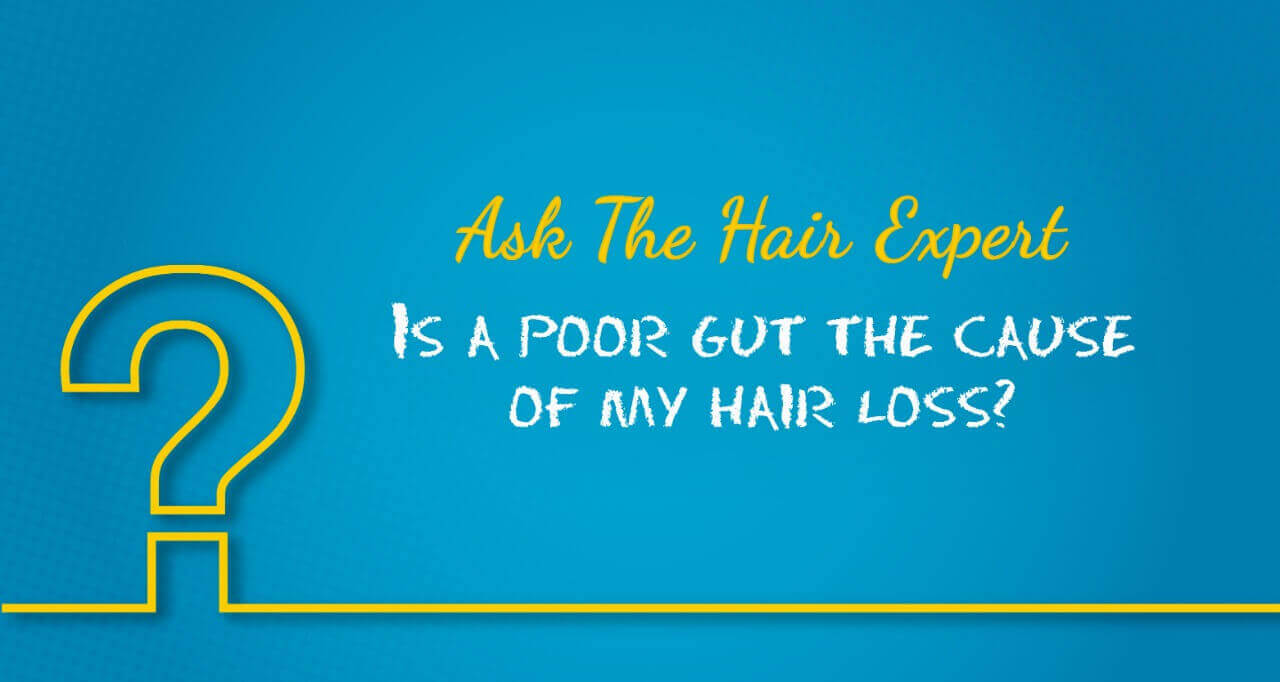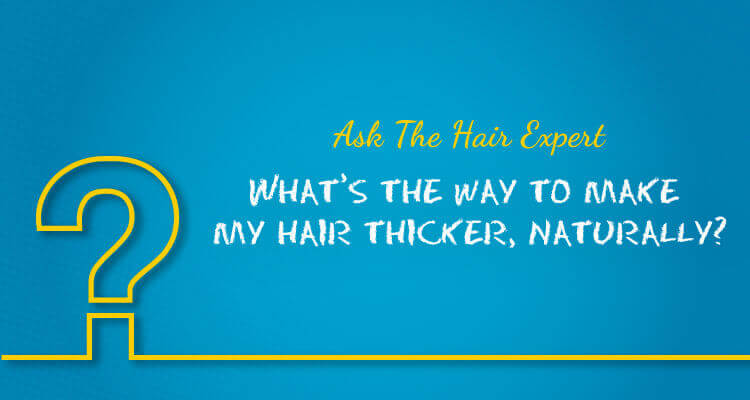The most basic hair care tool (after your fingers!)? A comb!
Something so basic that we hardly pay any attention to it; taking it absolutely for granted.
But did you know that the type of comb or brush you use, and the way you use it impacts your hair’s health significantly?
The number of men and women facing excessive hair fall in our country is staggering. This may be a result of autoimmune disorders, genetic predisposition, hormonal imbalance, poor diets among a host of reasons. Would you have ever guessed that using the wrong comb, the wrong way, is one of the most common reasons that aggravates hair fall??
Today, we will take you through this very topic to help you understand the benefits of using the right comb and also the negative impact that a wrong comb can create. While at it, we will also address a frequent query on the difference between a comb and a hairbrush! Let’s get started…
Why do you need to comb your hair?
Combing impacts your hair and scalp equally. And it is important to understand how it does. ‘Cos when you understand its significance you will ensure that you pay attention to this otherwise mundane task!
Here are the three main things that happen when you comb your hair.
- Blood circulation on the scalp is accentuated. Combing acts upon the capillaries of the scalp, increasing the blood circulation. This helps in transporting oxygen and nutrients to the hair follicles effectively. This nourishes the hair roots, promotes growth and helps reduce hair loss.
- Combing ensures there is proper distribution of natural oils present on your scalp. Your hair gets naturally nourished by these oils as you comb through, aiding hair growth.Our scalp has sebaceous glands that produce sebum (natural oil), which is a protective oil and natural conditioner. Combing helps stimulate these glands and helps by distributing the sebum from the root of the hair, all the way along the shaft, making hair stronger and more resilient.While the sebum does the above, it also works on the scalp, creating the right pH balance. This is crucial for a healthy scalp. Scalp care is super important ‘cos a healthy scalp is the base for healthy hair!When you assist the sebum’s role by combing, your hair is not as dry, but smoother and shinier. If you do not comb right, you are leaving excess sebum to gather greasily on your scalp. This can lead to a whole other set of scalp problems!
- Your scalp is exfoliated and stimulated. Combing cleans your hair and scalp. It removes old hair, dead skin cells, hair product residues, grime, and other deposits at the root of your hair and on your scalp.If this regular, basic exfoliation is not done, it can lead to clogging of the scalp’s pores and encourage bacterial infections. Combing further helps open up the pores, thereby allowing your hair & scalp to breathe. This is the most natural way of getting rid of dead cells and dirt, as is also the best way to rejuvenate dull and dandruff-ridden hair!
Is there a ‘right comb’?
Always use a wide-toothed wooden comb (preferably made of rosewood).
A wooden comb is anti-static (unlike plastic combs) and getting rid of static is important, ‘cos this is the main reason why your hair gets frizzy, making it brittle and prone to breakage.
Wide rounded tips of a wooden comb help in giving the right massaging effect to your scalp, causing minimum friction. They are gentle on your hair, do not scratch the scalp and help in preventing the tangling of hair to a great extent.
Wide toothed combs are a great tool to comb thick, curly hair which is otherwise very difficult to deal with. Wooden combs don’t pull on your hair as much and hence lesser hair breakage. It also helps prevent split ends. And it’s worth mentioning – these are way more eco-friendly than any other kind of comb or brush!!
Brushes vs. Combs?
There is also always a discussion on combs vs. brushes. Let us clarify that both serve their particular purposes. Combs act as a detangler, scalp stimulator and as a tool for distributing natural oils effectively, as we have discussed above. They are also preferable when your hair is damp after a wash while brushes are used when hair is dry.
Brushes come in a variety of shapes and sizes. They have their purposes too, mainly to help deliver a particular style when your hair is dry. Having said that, paddle brushes are however known to help cover the scalp well and distribute natural oils for some hair types.
Many use the comb as a detangler at the beginning of their hair fixing process, followed by brushing. Different types of brushes are used, typically along with styling equipment like blow dryers and clips, to style the hair.
Comb too can be used for styling, however, there is a difference. Typically comb is first used to detangle and make the hair knot-free. It is then used to divide or part the hair into required sections and to tease it. The hairbrush is then used to curl, add volume, and create shapes.
It is also important to understand that while a comb is suitable for any type of hair (especially the wide-toothed ones), brushes have to be chosen and used carefully as per hair type.
The wide & flat paddle brush (which we spoke of earlier) with a rubber cushion base, helps deliver results as a comb while adjusting to your head’s contour. It is suitable for most hair types. However, others like the round-barrel brush are used only to style and set hair in curls. If you have short or very fine hair, then you need a very soft-bristled brush. While many suggest nylon bristle brushes for detangling, it ends up pulling your hair too much, whatever your hair type.
Not all brushes are usable across the board. You need to consider your hair and scalp condition, your hair type, thickness, texture, length, sensitivity, and your preferred hairstyle when you choose your brush! Combs are fairly less tricky to pick!
Is there a ‘right way’ to comb?
There is the methodology and the frequency to be discussed here. Apart from of course the right tool, which we have discussed above.
Firstly, the frequency – you should comb your hair at the right intervals, which means it should be not too often or too little! How much is too much? Well, there is no one number applicable to all!
How frequently you need to comb your hair every day, and how many times to stroke it each time, is something that is very person-specific. There is no sacrosanct number! And no, brushing ‘100 times a day’ rule is just a myth! It does not necessarily work that way!
If you comb your hair too little, then they will start tangling big time, leading to hair fall and breakages. On the other hand, if you comb your hair too often then, it will make your hair dry and the scalp oilier. Ideally one should comb anything between 3 to 8 times based on the need for your hair.
Now coming to the methodology of it, here are some simple pointers to keep in mind!
- Make sure that the bristles/teeth of your brush/comb are not pointed. Metal combs and sharp bristled brushes displace the cuticle plates, making hair dull.
- Use only a wooden comb – never rubber or iron or plastic. Make sure the ends of the comb are not pointed. Do not pull or yank hair. Be gentle!
- A rough brush or comb (or even a good brush or comb used too much) causes friction and leads to the physical wear of the hair. Brushing or combing hair too frequently or in the wrong way (such as using a fine-toothed comb on very thick, curly hair or teasing hair) can lead to breakage.
- Never comb or brush wet hair, as it is more susceptible to stretching and breaking when wet. Finger- comb it in gentle massage-like movements. Wait until it is damp before combing or styling.
- Create a midline, comb to the sides and then over it. You are then paying attention to the place where a majority of the blood vessels that supply to your scalp, reside – at the back of your head. The occipital region, at the back, is packed with blood vessels (it’s one of the reasons why one rarely goes bald in this area!) and stimulating this section when you comb can do wonders.
- If you’re someone with straight or wavy hair, use a wide-toothed comb your damp (not dripping wet!) hair while there is still conditioner in it. Start from the bottom and work gently up all the way to the roots. Wait until it’s all dry before getting a brush out to style it.
- If you are curly-haired or have textured hair, the wooden wide-toothed comb we discussed is especially for you. Detangle gently with this comb while your hair is damp. This will help keep frizz down and breakage less.
- If you have long, thick hair, Separate hair into small sections. With a wide-tooth comb, carefully work from the ends in a downward direction only. Part your hair, through a midline and comb the from the center outward. Ensure you cover the back of your head well (remember the occipital region?)
- When combing and detangling your hair, you should begin from the tips and work your way up the hair shaft. Not the other way down – a very common hair care mistake that should be corrected! This is a gentler technique, especially if your hair is long and generally knotty. Start combing with short strokes at the bottom, detangling in sections, until the comb passes easily down the whole length of your hair.
- Avoid sharing brushes, combs as towels, to prevent catching infections. Wash your brushes and combs regularly, and especially if someone else has used them. It’s important to maintain hygiene!
Also, never leave hair strands stuck on the comb or brush, after your use. Remove it immediately. Wash your combs at least once a month. This will ensure removal of oils, hair products, dust and other residues that you don’t want to get back on your hair & head!
Use lukewarm water, maybe a little shampoo and rinse thoroughly. Handy hack – old toothbrushes are helpful for scrubbing between those bristles!
It may be a worthwhile practice to replace your brush or comb once in say six months. - Treat your hair like a piece of fine old lace. Treat it carefully avoiding any unnecessary brushing, combing or handling!
It is best to pay attention to how your hair reacts to a certain comb or the way you go about your combing/ styling! If you need help in deciphering what your hair is saying, you should go meet the hair-whisperer! Your trichologist!
Benefits of using the right comb, the right way
- Controls Damage
Combing right, every time is the best trick in the book to curtail hair damage, and retain the health & shine that you’re looking for in your hair. Hair & scalp treatments that relax your muscles and boost the blood flow in hair follicles limits damage from the root level. But this is periodical.
What can you do on a daily basis to keep the follicles stimulated? Give your scalp a good brush. It will help with blood circulation and help spread the natural oils as well through the hair. This, in effect, helps you control hair damage. - Aids hair growth
Long healthy hair doesn’t happen overnight. Patience backed up with proper hair care routine is the key to reach the perfect length. Comb and brush your hair regularly and you will ensure reduced hair breakage. And increased blood circulation on the scalp. This can thus aid your hair growing process.
Given the many advancements in trichology, you also have special Laser Combs which help in improving the blood circulation of the scalp and helps in rejuvenation of the hair follicles. This is a part of some key tricho treatments!
Let us clarify here that combing hair doesn’t make your hair grow any faster though! Hair grows as per the growth cycle. Combing and maintaining your hair merely aids the process! - Thicker & healthier hair
Your hair can actually start to look healthier and thicker by following this activity. When you use the right brush, you can give your hair a nice voluminous look, while you are ensuring its good health. - Easier to manage
When the comb and brush you use are the right ones for your hair type, your hair automatically becomes easier to manage. You will notice the hair strands on the comb become lesser and lesser, to becoming the negligible quantity (which is just those hairs that are on their falling phase!). Lesser tangles, lesser flyaways, less texture damage, lesser breakage, and lesser hair fall – Easy hair management! - Maintains style and shape
Does it feel like your hair starts to lose the shape of the haircut, the day after your hair cut? If you have a high-maintenance hairstyle, be it high layers, a short bob or mid waves, your overall look goes for a toss, if not kept up with properly. Use the right kind of brush and comb to keep your salon-look intact. Brushes come in a great variety of shapes and sizes, and can be absolutely bewildering we know! You can take a note from your stylist on which brush would suit your hairstyle the best, and how to achieve the look after every wash at home.
Remember, your hair & scalp is different from your neighbours! Discuss with your trichologist to arrive at a hair care routine that would suit you best, including the type of comb and brush you need!
Let us remind you, hair is science, not magic! It needs scientific care and due diligence for it to be healthy and full of life! Seek professional advice and stay ahead of problems!
Trust that with today’s blog we have touched upon and detailed a very basic, essential everyday-hair-topic!
Do get to know more about your hair! Read our blogs on hair care, hair trivia, hair loss, and solutions! Fresh blogs are added, week on week!
You can also follow us on social media to keep up with the updates and for all things HAIR!



